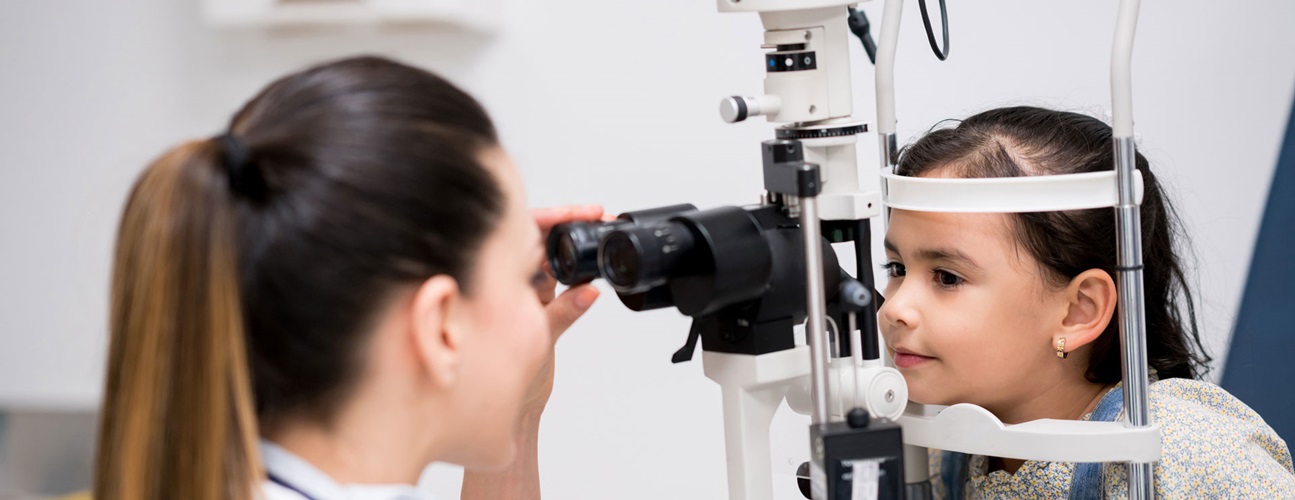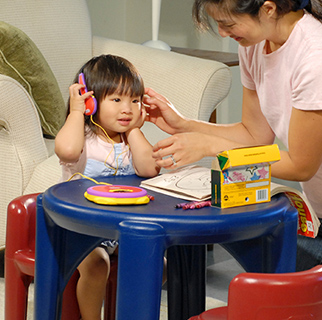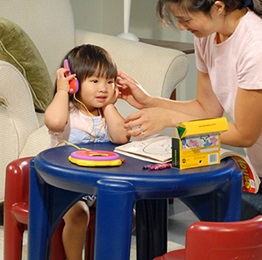6 Ways to Be Proactive About Your Child's Eye Health
Featured Expert:
Your child’s eyesight and visual development will go through many changes beginning at birth. You and your pediatrician will monitor these vision milestones as they grow from infant to toddler to school age. Although these developments occur at a different pace for each child, there are ways to ensure your child’s eye health is on target. Johns Hopkins ophthalmologist Courtney Kraus shares some tips on how to play an active role in your child’s vision development and eye health.
Boost visual engagement
You can help engage your child visually as a newborn and toddler with high-contrast colors and patterns in toys and décor. Give your child time to focus on things around them when in new environments, and approach objects from all angles to get your child comfortable with a wider field of vision. Playing games such as peekaboo and patty cake can help stimulate hand-eye coordination for babies the same way a game of catch can do with your toddler or school-aged child.
Provide a balanced diet
Nutrients such as zinc, lutein, omega-3 fatty acids, and vitamins A, C and E have been found to be beneficial to eye health.
- Fruits with vitamins C and E, such as oranges, strawberries and mangos, can help restore tissues and prevent infections.
- The omega-3 fatty acids found in fish can prevent dry eye and reduce future risk of cataracts and AMD.
- Leafy greens containing Vitamin A such as spinach and kale can help fight dry eye as well as night blindness.
- Non-meat proteins such as eggs and nuts also help balance your child’s diet.
It is also important to remember that a healthy diet can help prevent conditions such as obesity and hypertension, which have been linked to additional eye diseases.
Protect eyes with appropriate eyewear
Recent studies have shown that 90 percent of pediatric eye injuries can be prevented. As children become more active, be sure to equip them with protective eyewear made with shatterproof plastic, called polycarbonate lenses. Look for eyewear that has been tested to meet the American Society of Testing and Materials (ASTM) standards. Be sure to scope out any hazardous equipment in the indoor or outdoor locations where your child may be playing.
Limit use of digital screens — As digital learning becomes more common, screens from computers, tablets and mobile phones are more present in the lives of children than ever. Keep screens 18 to 24 inches from eyes, and encourage your child to follow the 20-20-20 rule, which is to look up from the screen every 20 minutes and look at something at least 20 feet away for 20 seconds
While studies have shown that blue light from digital devices is not dangerous to the eyes, continuous viewing of these screens up close can cause digital eye strain, a condition which can cause blurred vision or dry, irritated eyes, as well as issues with focusing.
Look out for warning signs
You may be able to detect vision problems if you see your child struggle with the following:
- Disinterest in distant objects
- Squinting
- Head tilting
- Holding objects very close to the eyes
- Eye rubbing
- Sensitivity to light
- Poor hand-eye coordination
- Disinterest in reading or viewing distant objects
Attend regular eye exams
If you or your pediatrician suspects that your child may have a vision problem, make an appointment with your local ophthalmologist for additional screening. Your eye doctor will be able to recommend the best course of action to take when dealing with potential issues with vision development.







